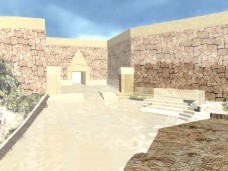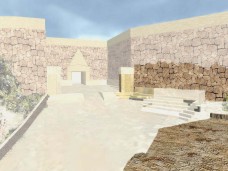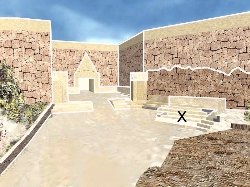

Figure 8 a & b: Images of the entrance to the Athenian Acropolis with distinctions between the real and the restored. 8a (left) with restored portions lightened; 8b (right) with restored portions lightened further
So we have a problem because the technology is so powerful. At the same time, though, we have an opportunity because the computers are so powerful.We return to the double-edged sword. Computers make it easier than it has ever been to present a more complex picture of the past - both complex images and complex interpretations. That means that we can create compelling images but it also means that we can create many images, for instance showing different parts of a structure and a variety of scholarly interpretations. We can use the technology to help us present compelling images and also to present a new level of archaeological complexity to one another and to the general public.
I argue therefore that there are good reasons, both to avoid a danger and to improve understanding, to use the technology carefully, self-consciously, and in service of an honest and complex reading of the monuments of our past, whether for an exalted professor or a bored tourist. So perhaps it will be helpful to try to define some of the ways I think the technology should be used to make those more honest and complex views of the past.
First, we should distinguish between what we know and what we think, the real and the restored, in any presentation (Fig. 8a). The viewer should always be able to determine what part of our view of the past is real and what part has been reconstructed. Even the most carefully made images should allow and encourage the viewer to separate the real from the restored. This means, I realise, that the most compelling images cannot be used; so I would retreat a bit from that extreme position and suggest that, at a minimum, no viewer should ever be presented with a realistic reconstruction without some accompanying information that would make clear what portion of the whole is real and what portion is reconstructed. In addition, the actual remains should be seen before the most realistic images, because the persuasive image is just that, persuasive, and cannot be removed from the memory once it has been viewed (Fig. 8b).


Figure 8 a & b: Images of the entrance to the Athenian Acropolis with
distinctions between the real and the restored. 8a (left) with
restored portions lightened; 8b (right) with restored portions
lightened further
Furthermore, there are differing levels of certainty in reconstructions; some things can be reconstructed with all but absolute certainty, others only on the basis of complex arguments. These distinctions, too, should be made clear. Even the seemingly trivial things we restore with common sense but not evidence should be explicitly separated from the known.

Fig 8c: restored portions lightened and outlined in white
Distinctions between the real and the restored are often made in physical reconstructions for similar reasons. At Pompeii, tiles are laid in walls to mark the line of demarcation between extant and new construction, and on the Acropolis new marble in the Erechtheum was treated to make it visibly distinct from the original (Fig. 8c).
Figure 8 shows some very different images of the Acropolis entrance. In these cases, the restored portions are treated differently to make clear how little of the entrance exists in situ. In one image (Fig. 8a) the restored portions are lightened; in another (Fig. 8b) lightened still more, and in the third both lightened and outlined in white (Fig. 8c). In this last case, however, I would ideally want to make an added distinction, since the steps in the lower courtyard (at the position marked with an X in Figure 8c) are virtually certain in all but material; we have the steps on either end and need only fill in the gap. Thus, there are more than two kinds of material, real and hypothetical; there is also material that is not actually in situ but is indisputably a part of the monument. I think these images should help make clear the distinction between the real and the hypothetical and more, but I suspect we need some studies in psychology to know what must be done to aid understanding without overwhelming the senses. In this article only some simple possibilities are shown.
© Internet Archaeology
URL: http://intarch.ac.uk/journal/issue8/eiteljorg/eit5.html
Last updated: Tue Aug 22 2000